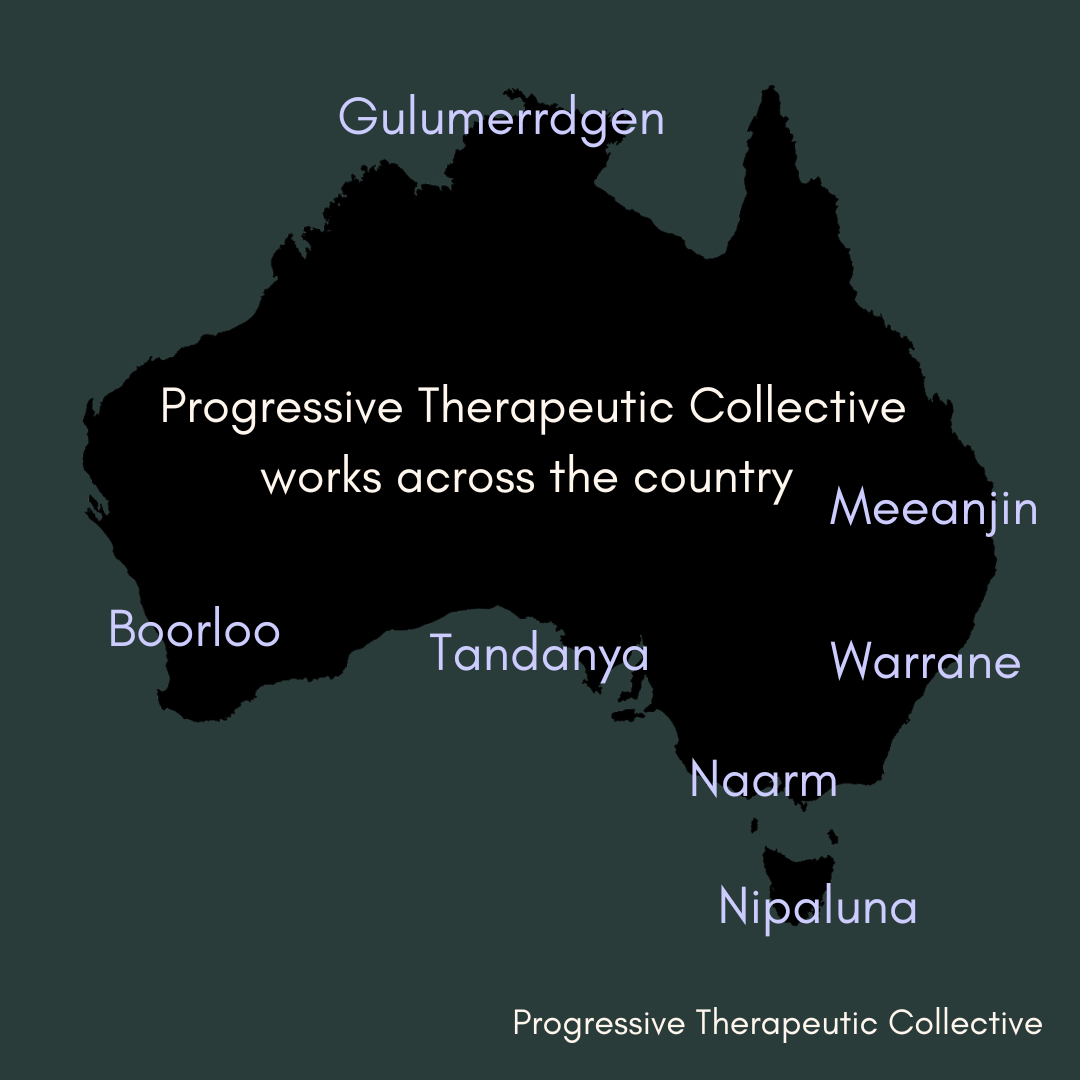Premenstrual Dysphoric Disorder (PMDD):
A gender-affirming guide
Why a gender-affirming & gender neutral approach?
Premenstrual Dysphoric Disorder (PMDD) is a severe and chronic medical condition that impacts millions of individuals worldwide.
This page is dedicated to providing a comprehensive overview of PMDD from a gender-affirming and gender-neutral perspective. Whether you are newly diagnosed, supporting a loved one, or seeking to expand your knowledge, our aim is to inform, educate, advocate, and build a supportive community.
At Progressive Therapeutic Collective, we recognise that PMDD can affect people of all gender identities.
Our goal is to empower you with knowledge, promote awareness, and advocate for better understanding and treatment of PMDD.
Join us in building a community that supports and empowers each other.

What is PMDD?
PMDD is a chronic medical condition that affects about 5-8% of individuals of reproductive age. Unlike typical premenstrual syndrome (PMS), which can cause mild discomfort and mood swings, PMDD is characterised by extreme emotional and physical symptoms that severely disrupt daily life.
These symptoms typically occur in the luteal phase of the menstrual cycle, which is the time between ovulation and menstruation, and they usually subside once menstruation begins.
The Impact of PMDD
The impact of PMDD on individuals is profound. Emotional symptoms include severe irritability, depression, anxiety, and mood swings. Physically, people may experience fatigue, sleep disturbances, bloating, and chest tenderness. These symptoms can be so intense that they interfere with work, relationships, and everyday activities, often leaving individuals feeling isolated and misunderstood.
Challenges with Diagnosis
One of the biggest challenges with PMDD is obtaining an accurate diagnosis. Many people with PMDD are misdiagnosed with mood disorders, such as bipolar, BPD, depression or anxiety, because the symptoms may appear similar. However, the cyclical nature of PMDD – with symptoms peaking in the luteal phase – is a distinguishing factor.
To accurately diagnose PMDD, healthcare providers typically recommend tracking symptoms over at least two menstrual cycles to identify the pattern and severity of symptoms.
Treatment Approaches
Treating PMDD can be complex, as what works for one person might not work for another. Current treatment approaches are varied and can include a combination of lifestyle changes, therapy, and anti-depressant medication
Lifestyle Changes: Regular exercise, a balanced diet, and adequate sleep can help manage symptoms. Stress-reducing activities like yoga and mindfulness meditation are also beneficial.
Medications: Selective serotonin reuptake inhibitors (SSRIs) are often prescribed to help manage the mood-related symptoms of PMDD. Hormonal treatments, such as birth control pills, can also be effective in regulating the hormonal fluctuations that trigger PMDD symptoms.
A Holistic Approach
Many healthcare providers advocate for a holistic approach to managing PMDD, integrating multiple strategies to provide comprehensive relief. This might include a combination of medical treatment, therapy, dietary adjustments, and support from family and friends.
The Need for Advocacy
Despite its prevalence, PMDD remains under-researched and often misunderstood. Greater awareness and advocacy are essential to improve research, treatment options, and support systems for those living with PMDD. By sharing experiences and raising awareness, individuals can help foster a better understanding of this condition.
PMDD is a serious and life-altering condition that requires attention and compassion. By acknowledging the struggles of those living with PMDD and advocating for better resources and support, we can make strides towards a world where everyone has the understanding and care they need.
Jordan, 22
“Living with PMDD as a 22 year old trans person is tough. Every month, the mood swings & feeling super down make my gender dysphoria worse. It’s hard to find doctors who get what I’m going through, with both things. People don’t always understand and it’s like I’m always having to explain myself. I’m just trying to find the right help and feel okay with who I am.”
DSM-5
The DSM-5 criteria for Premenstrual Dysphoric Disorder (PMDD) are as follows:
A. Core Symptoms
In most menstrual cycles during the past year, at least five of the following symptoms must be present in the final week before the onset of menses, start to improve within a few days after the onset of menses, and become minimal or absent in the week post-menses. At least one of these symptoms must be from the first four symptoms listed below:
Marked affective lability: (e.g., mood swings; feeling suddenly sad or tearful, or increased sensitivity to rejection)
Marked irritability or anger: or increased interpersonal conflicts
Markedly depressed mood, feelings of hopelessness, or self-deprecating thoughts
Marked anxiety, tension, and/or feelings of being keyed up or on edge
B. Additional Symptoms
Additional symptoms to reach a total of at least five when combined with the core symptoms from Criterion A:
Decreased interest in usual activities: (e.g., work, school, friends, hobbies)
Subjective difficulty in concentration
Lethargy, easy fatigability, or marked lack of energy
Marked change in appetite; overeating; or specific food cravings
Hypersomnia or insomnia
A sense of being overwhelmed or out of control
Physical symptoms: such as breast tenderness or swelling, joint or muscle pain, a sensation of "bloating," or weight gain
C. Severity
The symptoms must be associated with clinically significant distress or interference with work, school, usual social activities, or relationships with others (e.g., avoidance of social activities, decreased productivity and efficiency at work, school, or home).
D. Exclusion of Other Disorders
The disturbance is not merely an exacerbation of the symptoms of another disorder, such as major depressive disorder, panic disorder, persistent depressive disorder (dysthymia), or a personality disorder (although it may co-occur with any of these disorders).
E. Confirmation
Criterion A should be confirmed by prospective daily ratings during at least two symptomatic cycles. (Note: The diagnosis may be made provisionally prior to this confirmation.)
F. Not Attributable to Other Substances
The symptoms are not attributable to the physiological effects of a substance (e.g., a drug of abuse, a medication, other treatment) or another medical condition (e.g., hyperthyroidism).
PMDD & Hormonal Sensitivity
At the heart of Premenstrual Dysphoric Disorder (PMDD) lies a profound sensitivity to hormonal changes in the body. Unlike typical premenstrual syndrome (PMS), PMDD is not merely a result of hormonal fluctuations but an abnormal response to these changes.
During the menstrual cycle, levels of estrogen and progesterone rise and fall naturally. In individuals with PMDD, these hormonal shifts trigger severe emotional and physical symptoms, indicating an underlying biological sensitivity.
Research suggests that the central nervous system's response to hormonal changes plays a crucial role in PMDD. The brain's neurotransmitters, particularly serotonin, are affected by the fluctuations in estrogen and progesterone. For those with PMDD, these neurotransmitter systems appear to be more sensitive, leading to significant mood disturbances and emotional dysregulation.
This heightened sensitivity means that even normal hormonal changes can result in disproportionate reactions, causing the severe symptoms characteristic of PMDD.
Furthermore, genetic factors may contribute to this heightened hormonal sensitivity. Studies have shown that PMDD often runs in families, suggesting a hereditary component. This genetic predisposition may influence how an individual's brain and body respond to hormonal changes, exacerbating the symptoms of PMDD.
There is still much to be learnt about this condition.
Pay the Rent & Mutual Aid
The Pay the Rent movement calls for non-Indigenous individuals and businesses to regularly contribute financially to Indigenous organisations as part of reparations and restorative justice. This movement aims to provide tangible support to Indigenous communities, addressing historical and ongoing injustices while fostering a sense of accountability and solidarity.
At Progressive Therapeutic Collective (PTC), we've been paying the rent since our inception four years ago.
Each year, we allocate 1% of our annual profit to The Westerman Jilya Institute for Indigenous Mental Health and another 1% to Decolonise Sex Work Australia, a Blak mutual aid fund for sex workers. As a white-owned business, we believe it’s crucial to acknowledge and address systemic injustices against Indigenous communities. Our commitment to mutual aid is about taking concrete actions to bring aboug meaningful and genuine social change.












